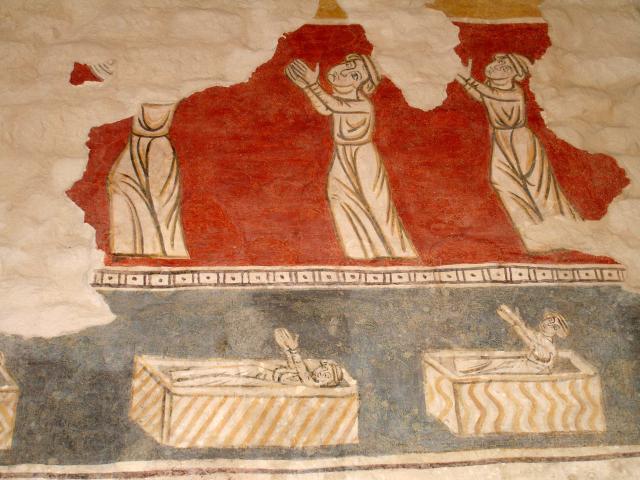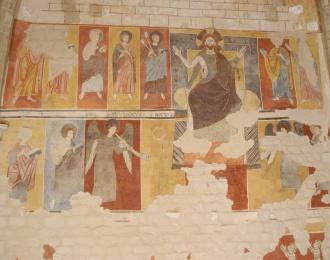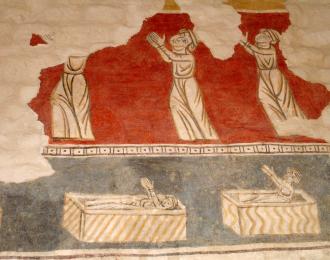Last Judgement
San Bevignate Templar Complex

Bottega perugina (Local workshop)
fresco
1260-1270
The right-hand wall of the apse in Chiesa di San Bevignate is decorated with a monumental Giudizio Universale (Last Judgement) which (like other frescoes in the apse, vaulting, upper walls and controfacciata) has been attributed to a local Perugian atelier which was active between 1260 and 1270. The controfacciata (inner wall of the façade) was traditionally the location of choice for Last Judgement frescoes but in the case of San Bevignate that space is occupied by Templar-themed works. Another peculiarity of this fresco is that both in terms of style and composition it draws inspiration from the miniatures in the Bibbia di Todi (an 11th century Atlantic Bible from the San Fortunato cathedral now held in the Vatican Apostolic Library).
The lower part of the composition depicts a procession of flagellants, led by a figure presumed to be Raniero Fasani who (during the 1260 Holy Week) founded the Perugian flagellant movement which then spread rapidly to the rest of the Italian peninsula. The 14th century hagiography Lezenda de fra Rainero Faxano closely associates him with the beginnings of the flagellant movement: San Bevignate is said to have appeared to Fasani and exhorted him to make public his self-mortification, hitherto practised only in private. Another point of interest is that in the portion of the fresco immediately above the flagellants, the damned and the saved are emerging from their tombs: the saved emerge with ease, already clothed in tunics to suffer justice from Christ enthroned, who dominates the composition, whereas the damned are contorting themselves, naked and incapable of holding his gaze.

